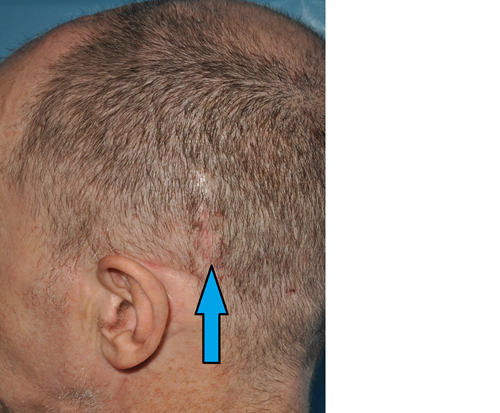Driving
After your operation we advise that you do not drive for at least 6 weeks. DVLA rules and regulations are frequently updated so we advise you to check this with the DVLA at
 www.gov.uk/driving-medical-conditions;
www.gov.uk/driving-medical-conditions;
(look under implanted electrodes or deep brain stimulation for movement disorder or pain).
Magnetic Resonance Imaging (MRI)
After the operation you should not have a MRI scan without discussing this with the DBS team. It is usually possible to have a MRI scan with the implanted device but specific conditions must be met which needs specialist input.
It may be you are advised by another hospital MRI scanning is not possible. Please check with us as it may in fact be possible here.
Other surgery or medical procedures including dentistry
You may need a surgical procedure sometime in the future after your DBS operation (such as a joint replacement or spinal surgery). Your surgical team will need to know that you have a DBS device implanted before performing surgery, and may need to take some precautions (such as turning off the device). We advise you to have prophylactic antibiotics if you need dental work or procedures involving either a general anaesthetic or urinary catheterisation in order to try to avoid bacteria settling on the DBS hardware and causing infection.
Diathermy (also known as electrocautery)
This is when an electric current is used to heat body tissues during surgery in order to seal blood vessels. If possible, only bipolar diathermy should be used in operations.
Monopolar diathermy poses risks of hardware damage and heating injury. Certain safer alternatives using radiofrequency (RF) energy are available.
You must also avoid Shortwave Diathermy, Microwave Diathermy and Therapeutic Ultrasound Diathermy, physiotherapists tend to use these to relieve pain, stiffness
and muscle spasms.
Other devices or equipment to avoid
Avoid security screening devices such as those in airports. When approaching them hand over your patient identification card and request a search by hand.
Other tests or scans
X-rays, CT scans and PET scans are not likely to affect the DBS system.
Devices that you can operate without any problem
Computers, copiers, faxes, electric blankets, electric cars, heating pads, washing machines, dryers, garage door openers, electric stoves, vacuum cleaners, hair dryers, shavers, remote controls, toasters, blenders, electric can openers, food processors, microwave ovens, televisions, radios, video recorders, CD players, mobile phone and tablets.
Special circumstances
Some devices in everyday life contain magnets. If your IPG comes into very close proximity (e.g. within 30cm) with such a device, there is a small risk it can be switched off. This includes electric car chargers, induction hobs, and certain modern mobile phones which can charge by induction. In our experience such interference is actually very rare; in any case your IPG can be switched back on again immediately using your handheld programmer.
Saunas and hottubs can raise the local temperature around your IPG significantly, and in general we recommend avoiding them.
Physical Activity
After the surgical scars are healed (usually at least 6 weeks) you can return to most physical activities except for those that result in repeated blows to the device such as boxing. You should always wear a helmet for sports such as cycling, skiing, snowboarding and horse riding. You should avoid parachute jumping and skydiving.
Flying
You should not fly until 6 weeks after the operation.
Any questions
If you have any questions please ask the staff.
![]()





